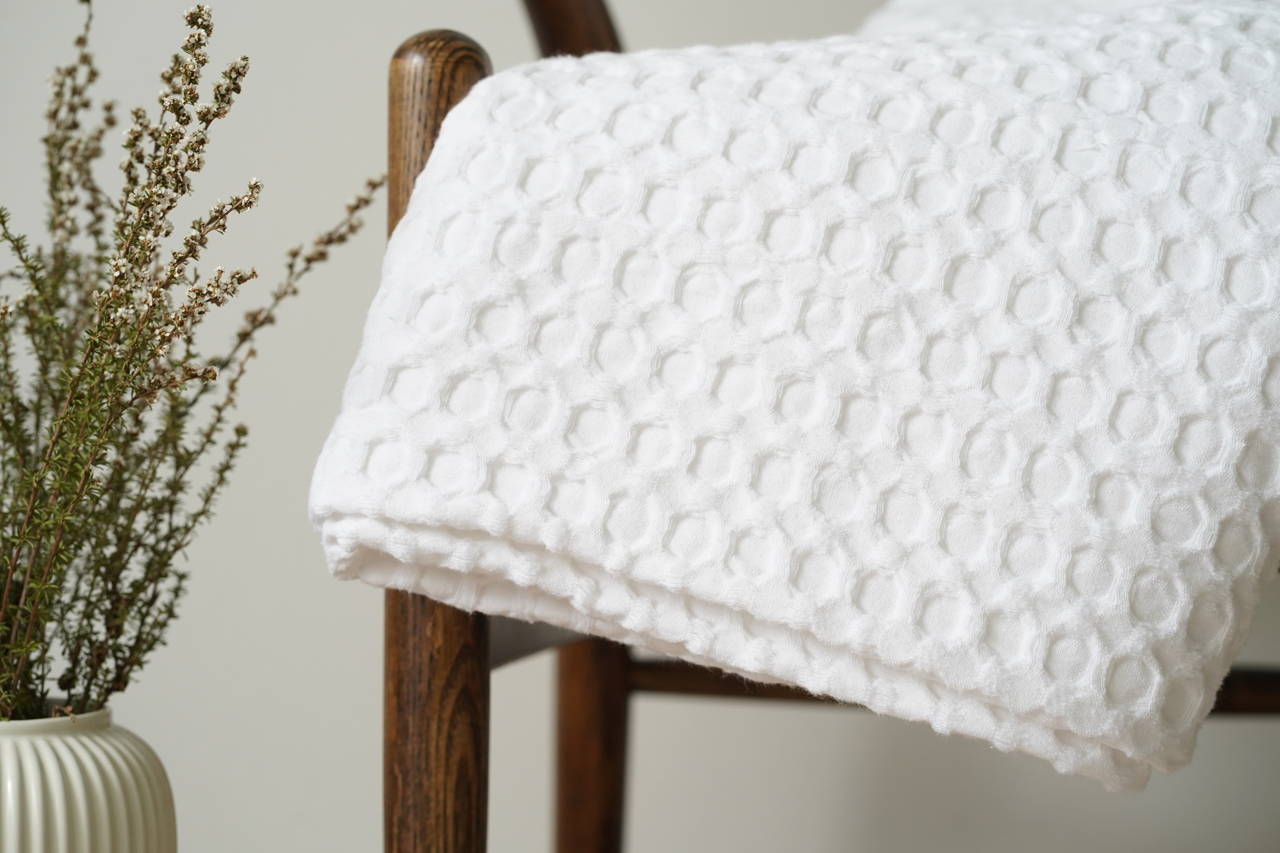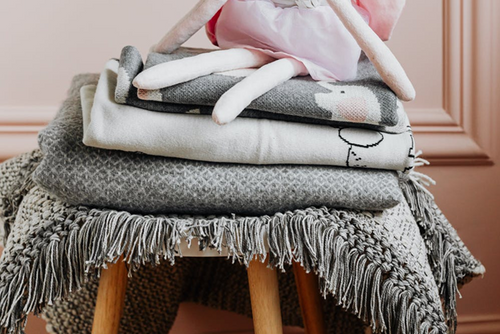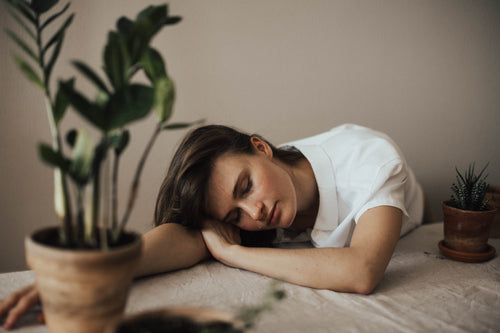Ever since we lived in caves, our hunter-gatherer ancestors used animal pelts and other materials to protect themselves from the harsh elements. Granted that we live in much safer homes now, but there is no denying that most of us feel safer snuggled up under the covers which can come in different types of blankets.

Image by Karolina Grabowska from Pexels
Covers are an essential and somewhat under-appreciated part of your daily rest, and most of us do not know what we are missing out on. That changes today!
What Is The Purpose Of A Blanket?
This big piece of cloth generally covers your entire body while you sleep. It comes in a variety of fabrics, weaves, weights, etc. But at the very core, it has one function — to cover you while you stay asleep and prevent the unnecessary escape of body heat.

Image by Ketut Subiyanto from Pexels
8 Common Blanket Types For Your Bed
Duvets vs comforters vs quilts are often compared with one another. But beyond these three are other main types you can choose from. We'll discuss each of them in detail below.
Comforter

Image by Cats Coming from Pexels
A comforter is a bedding material made of two pieces of cloth (usually cotton or polyester) sewn together at the edges. These can be stuffed with various materials such as feathers.
It has the advantage of being warm yet lightweight, and is favoured by those who don't prefer heavy bedding. They can also be put in duvet covers for an added benefit of customisation, but a comforter usually does not need a cover.
The disadvantage is that they are not suitable for warmer weather due to the nature of the filling and often need special care like dry cleaning.
Throw Blanket

Image by Isabelle Taylor from Pexels
It is a small, usually knitted or woven fabric made of a single layer of wool. This type is meant to be used as accent pieces for the bed or sofa and provide additional warmth over another layer of bedding.

Featuring Weavve’s Cotton Waffle Throw Blanket
Perfect for lounging, it is typically used when watching TV or when you just need to cover a bit of your body without wrapping yourself.
Duvet
While very similar to a comforter, a duvet has a few key distinct characteristics. It is typically white in colour and is often paired with duvet covers, allowing for greater versatility in customisation and comfort. It also tends to be built with ties on the corners for attachment to the cover.

Featuring Weavve’s TENCEL™ Duvet with Corner Loop Ties
Other than that, the fill type is always of an easily washable material, like down or TENCEL™ Lyocell fibres. This is in keeping with the philosophy behind it: to provide warmth without adding to the complexity of the bedding.
The significant advantage of a duvet is that the covers can easily be inserted, removed, and washed. This means that you are not locked into a specific look since the covers are interchangeable. The disadvantage is that if the duvet comes loose from the cover, it becomes lumpy and uncomfortable.

Featuring Weavve’s TENCEL™ Lyocell Duvet
While duvets can come with various shell materials, a breathable one is necessary. TENCEL™ and cotton covers are good for a comfy and warm feel.
Quilt
It is similar to a comforter, with the addition of being quilted. That means its stuffing is sewn into the outer fabric by stitching the material together in cells. This turns it into a single unit of three layers rather than two layers filled with loose stuffing.

Image by Erik Mclean from Pexels
Quilts can be stuffed with cotton, down, synthetics, or any warm material. Since they are thinner than comforters, they are a good option when looking for a cooling fabric.
They can be less cumbersome than duvets and more accessible to clean than comforters. However, quilts may still need dry cleaning which can become a hassle for daily use.
Weighted Blanket
While they started off as a therapeutic aid for anxiety and other similar problems, gravity weighted blankets have caught on with the general public. And it is for a good reason. They offer a lot of benefits for your sleep such as simulating deep touch pressure therapy. In fact, they're also proven to improve the sleep quality of new moms because of their relaxing effects.

Featuring Weavve’s Weighted Blanket
Despite the myriad of benefits, you need to consider whether you will be comfortable in one. Some people may have slight difficulties getting accustomed to the additional weight, which should ideally be about 10% of your body weight.
Knitted Blanket

Image by Caroline Feelgood from Pexels
Contrary to weighted ones, knitted covers are more suitable for people with medical conditions such as chronic respiratory or circulatory issues. They are not only stylish, but also extremely cosy and charming. The best part about this microfibre bedding is that it comes in a variety of designs and patterns.
Fleece Blanket

Image by Koshevaya_k from Pexels
There is a reason why so many people love fleece materials, and that is because they are ridiculously soft. These are insulating materials made of a synthetic fabric blend that comes with several benefits. They are not only lightweight and comfortable, but are also durable and highly breathable.
Electric Blanket

Image by Rachel Claire from Pexels
This contains integrated electrical heating wires that work like heating pads. The insulated wires are attached to the fabric, and are then heated whenever you plug it in.
Despite sounding dangerous, this material is a minimal safety risk. However, if and when it does become too old or damaged, it definitely poses fire and burn hazards.
6 Things To Consider When Buying A Blanket
The sheer number and types of covers on the market can quickly become overwhelming. Here are some factors to consider when buying a blanket in Singapore:
Fabric
Whether you get a thin cotton or a thick quilt, different types of materials dictate the bedding’s properties. A thin, lightweight fabric like microfibre or cotton might be ideal for dissipating body heat.

Image by Tatiana Azatskaya from Pexels
On the other hand, other types of fabrics like wool or fleece are helpful in keeping yourself warm. If you want a luxurious look with an elegant sheen, you can opt for silk. However, it is more expensive and often criticised for having unethical production methods.
Weave Method
The denser the weave of threads is, the less space there is for air to move through the fabric. Different types leverage different weaves, and it is a significant factor to look into before buying.

Image by Em Hopper from Pexels
Season
The best type of material for summer is a light and breathable fabric, like cotton or TENCEL™. Meanwhile, the ideal one for winter is made of thick fibres like fleece or wool.

Image by Olga Mironova from Pexels
Size
If you are sleeping alone, a single size might be enough. If you are sharing the bed, a queen or king-size cover is naturally more suitable depending on the size of the bed.

Image by Bianca Jelezniac from Pexels
Weight
You can buy bedding sets in a variety of weights, and the choice will be determined partly by the material, and partly by preference. Some people might be more comfortable in a thin cotton material, and others cannot fall into a deep sleep without a weighted one.

Featuring Weavve's Weighted Blanket
Sleeping Habits
Your sleeping habits significantly contribute to your preferred material. Whether you like to wrap yourself up all snugly in a warm quilt, or just want a soft, reassuring duvet, take your sleeping habits into account as they will dictate a lot of the prerequisites that directly affect your decision.
Whether for cosy or cool nights, you can find the perfect blanket in Singapore at Weavve Home!






































